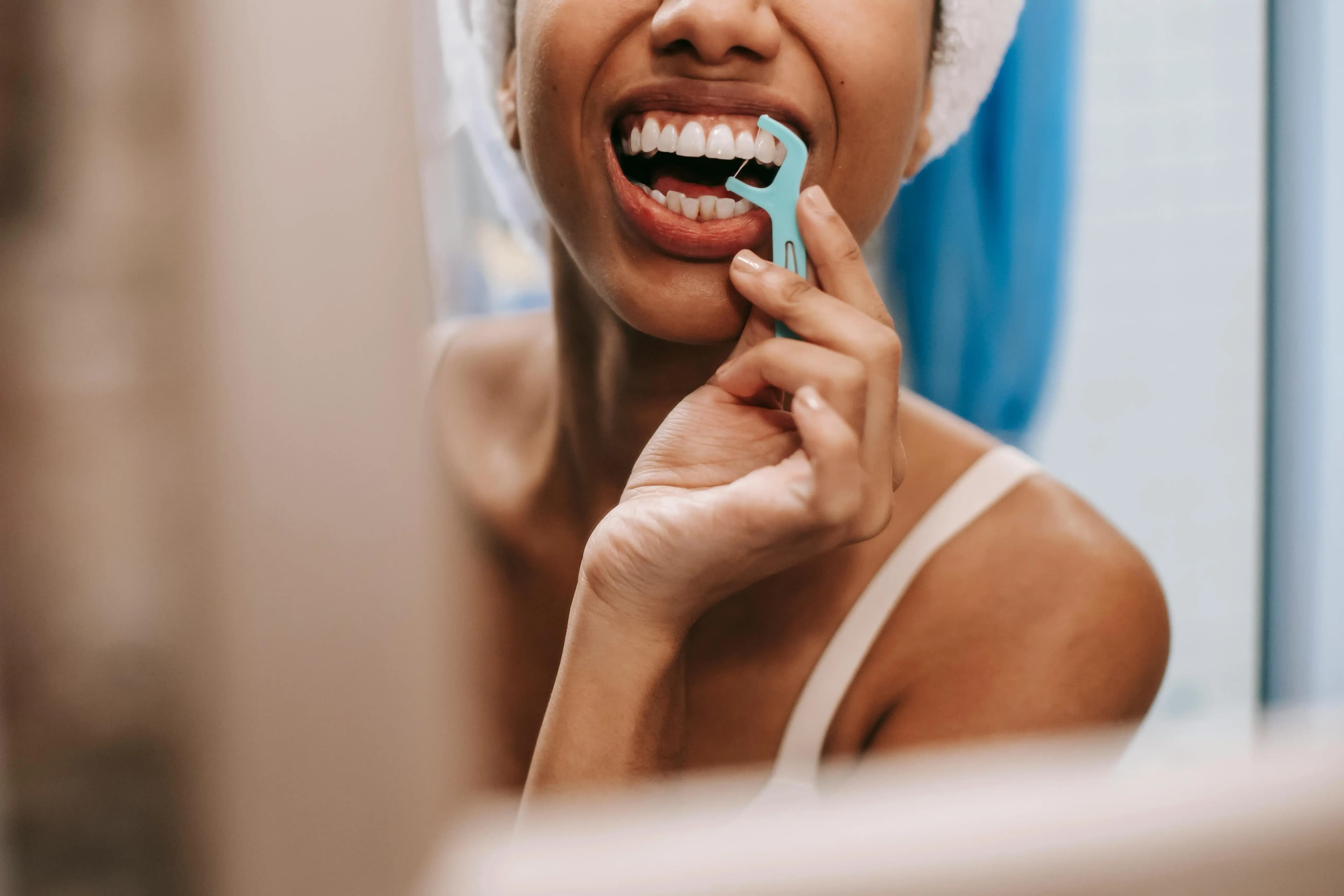The Role of Oral Hygiene In Maintaining White Teeth
Maintaining white teeth requires a diligent oral hygiene routine, including daily brushing and flossing, regular dental checkups, and mindful diet and lifestyle choices to prevent stains and promote overall oral health.
June 06, 2024
~5 min read

Introduction
Achieving a bright, white smile through teeth whitening treatments is only half the battle. Maintaining that radiant smile requires a diligent oral hygiene routine. Here, we explore the crucial role of oral hygiene in keeping your teeth white and healthy.
Daily Brushing and Flossing or using an interdental tool such as a waterpik
Brushing
Brushing your teeth at least twice a day is essential for removing plaque and preventing stains. Use a whitening toothpaste 1-2 x a week only to help with daily stains, for the rest of the days use a regular toothpaste. Consider an electric toothbrush for a more thorough clean.
Dry brushing daily has so many benefits. You can find the article here: Dry Brush Inside Bottom Teeth First
Benefits of Using a Waterpik
Effective Plaque Removal
The Waterpik, or water flosser, uses a stream of pulsating water to remove food particles and plaque between teeth and below the gumline. This can be especially beneficial after teeth whitening treatments to prevent staining from plaque buildup.
Improved Gum Health
Good gum health is crucial for maintaining a white smile. By effectively cleaning between the teeth and along the gumline, the Waterpik helps prevent gingivitis and other gum diseases that can lead to discoloration and other oral health issues.
Ease of Use
For many people, using a Waterpik is easier and more comfortable than traditional flossing. This is particularly true for those with braces, dental work, or limited dexterity. An easy-to-use tool increases the likelihood of consistent daily use, which is key to maintaining white teeth.
Flossing
Daily flossing removes plaque and food particles from between your teeth, areas that brushing alone can’t reach. This helps prevent discoloration and promotes overall gum health.
Regular Dental Checkups
Regular visits to your dental hygienist or dentist are vital. Professional cleanings remove stubborn plaque and tartar that can't be eliminated by brushing and flossing alone. These appointments also allow for early detection and treatment of potential oral health issues.
Diet and Lifestyle Choices
Avoid Stain-Causing Foods and Drinks
Limit your intake of coffee, tea, red wine, and dark-colored berries, as these can stain your teeth. If you do consume these, rinse your mouth with water afterward or use a straw to minimize contact with your teeth.
Quit Smoking
Tobacco products are notorious for causing yellowing and staining of the teeth. Quitting smoking not only benefits your overall health but also helps maintain a whiter smile.
Stay Hydrated
Drinking water throughout the day helps wash away food particles and bacteria that can lead to staining. It also stimulates saliva production, which naturally helps clean your teeth.
Chewing xylitol gum or sucking on xylitol mints
Xylitol helps to reduce plaque formation and the acid attack on enamel, xylitol helps maintain the natural whiteness of teeth and prevents stains.
Whitening Touch-Ups
To maintain the results of your whitening treatment, periodic touch-ups with at-home whitening products or in-office treatments may be necessary. Typically touch ups are recommended at least every 6 months sometimes sooner depending on habits.
Conclusion
Maintaining white teeth goes hand-in-hand with good oral hygiene practices. By incorporating these habits into your daily routine, you can enjoy a brighter, healthier smile for years to come. Remember, a commitment to oral hygiene is a commitment to overall health.
The accuracy of the information provided in this article is not guaranteed